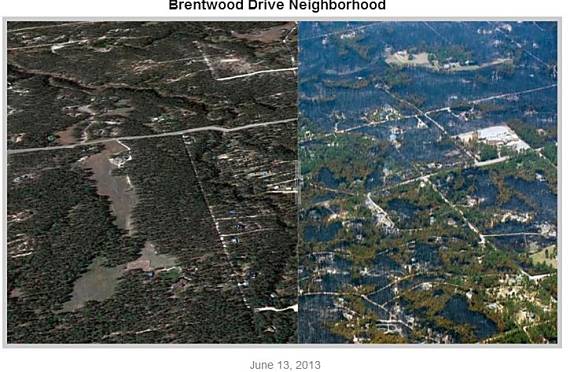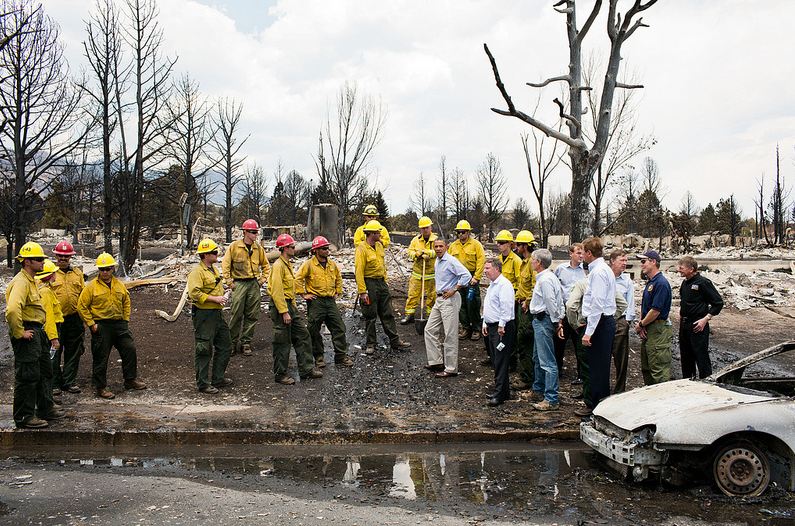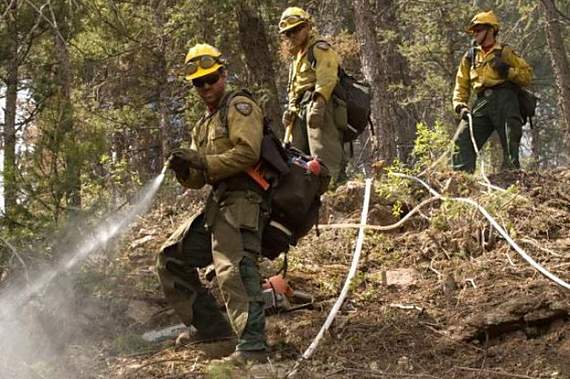(UPDATE at 9:25 a.m. MT, June 18, 2013)
The video below was shot by KKTV chief photojournalist Mike Petkash. It was posted Tuesday morning, June 18.
An update from the El Paso County Sheriff’s office lists 502 primary residences that were destroyed in the Black Forest Fire and another 18 with partial damage.
American Red Cross Disaster Assistance Teams are doing assessments within the fire perimeter. Utility crews continue assessing and securing service to residences for future re-entry. Excess resources are being released as incident objectives are being met. Firefighters continue to mop up and secure around structures to prevent further loss.
****
(UPDATE at 11:47 a.m. MT, June 17, 2013)
A tweet from KKTV in Colorado Springs:
That is the first time I have heard of this happening — survivors from a massive, very destructive wildfire less than a year before hold a picnic for survivors of another even more destructive wildfire that occurred just a few miles away.
Thunderstorms on Sunday brought 0.11 inches of precipitation to the Black Forest Fire area, which aided firefighters in their mop up efforts. The storm also produced lightning that ignited three new fires in the burn area which were quickly suppressed by firefighters, according to Incident Commander Rich Harvey.
The size of the fire has been more accurately determined to be 14,280 acres; on Saturday it had been listed at 15,500 acres. The cost of fire suppression is estimated at $5.5 million and 4,100 people are still under mandatory evacuation orders. The Denver Post has a map showing evacuation areas and the locations of structures that have burned.
Firefighters are placing flagging at residences, and writing on it the the date, time, and the name of the crew that checked and mopped up the area.
Incident Commander Rich Harvey told CNN on Sunday, June 16:
The perimeter work is done, now we’re focused on coming interior and making sure that all the heat that could eventually create sparks that could get over our line are done — we call it mop up.
At an 11:15 a.m. MT briefing on Monday, IC Harvey said the fire is 75 percent contained. (More information about “containment”.)
A Monday morning news release from the IMTeam detailed some of their plans for the day:
A continuing threat exists to structures within the fire perimeter due to the potential for extreme fire behavior from gusty winds from developing thunderstorms. The potential for re-burn from remaining hot spots within the ground fuels remains a concern. Firefighters will continue to grid the fire area for hotspots, especially around structures.
A media tour scheduled for Monday morning during which members of the press were going to be transported around the fire in a bus was postponed and no new date was established.
Continue reading “Black Forest Fire, Colorado Springs”





